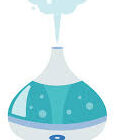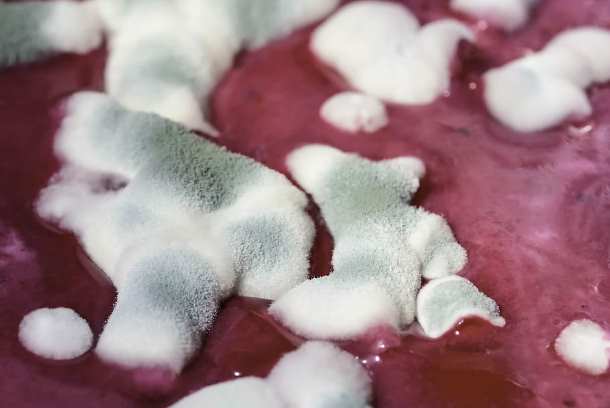Can Mold Survive without Humidity? It Will Stay Dormant
If you have had a mold infestation at home, you might ask this question. You could also ask whether a dehumidifier removes mold spores from the air.
Different types of this fungus, such as black toxic mold, thrive at humidity levels of 60 percent and higher! In fact, with high indoor temperatures, mold can grow in 24 to 48 hours in 60 percent humidity.
But will lowering the humidity level kill the mold? When the air is dry, it will prevent mold from thriving, but it is not going to kill it. Mold spores will stay dormant for a long time, and when the conditions for their growth are right, they will start a new mold colony.
Do not lower the humidity in your room and assume that the mold is gone. If it has reached the age of producing spores, it will stay intact but dormant until the conditions for mold growth are right.
What humidity level discourages mold growth in your home?

If you live in a place like Florida which has high humidity throughout the year, you need to know how you can keep mold from growing in your home.
Learn everything about the humidity level that encourages mold growth. It is also good to know the ingredients that must be present for mold to grow in your home.
First, there must be a high humidity level, between 55 and 65 percent. That is why we recommend that you keep the indoor humidity level in your home below 50 percent. Also, keep it above 30 percent, since you do not want to experience the symptoms of sleeping in a dry room.
Also, please know that the outdoor humidity level affects the indoor humidity level. Therefore, if there is high humidity outside, you should know how to prevent the same from coming into your house because it will raise your indoor humidity.
Invest in a good dehumidifier, which will kick in automatically when the humidity rises above the set level. Leave the dehumidifier connected even when you are traveling so that it can control the humidity level in your home. You will need a dehumidifier connected to a drainpipe for continuous operation.
The best thing is to keep an eye on your hygrometer so that you do not get runaway humidity in your home.
Tips to kill mold in your home
If you have had a mold infestation in your home, you need to know how to get rid of it. Thankfully, there are several tested and proven methods. Here are a few things you should do:
1. Control the humidity level
If mold spores land on a wet surface, they can find nutrients and start new mold colonies. Wet paper, wet walls, wet ceiling boards, and closets can all start mold colonies.
Keep the indoor humidity level between 30 and 50 percent. Mold requires an air moisture content of 55 percent or higher to thrive. If you keep the humidity level low, mold is not going to grow. Also, since high humidity keeps dust mites, lowering it keeps your indoor environment safe.
There are different ways to control humidity. Try the following:
More ventilation: If the humidity in your house rises because of cooking, bathing, and other activities, opening the windows and doors and having ventilation might help. Increasing the airflow in your home is going to remove the damp air and allow drier air from outside to come in.
Use an exhaust fan: Using an exhaust fan in the bedroom, bathroom, or any other room can help remove the damp air from the room and allow fresher and drier air to come from outside. It is cheap to buy and install, too.
Use a dehumidifier: Nothing controls humidity better in a house than using a dehumidifier. Better yet, buy a dehumidifier with a built-in humidistat. That way, the dehumidifier will switch on automatically when the humidity rises above 50 percent, or the set level. It will also switch off automatically if the humidity is low enough.
2. Dehumidify the crawl spaces
Most of the mold growth in the house starts in the crawl spaces and the basement. These are also some of the most neglected spaces at home, which most people forget to dehumidify.
Check the crawl spaces often because mold can start to grow there unnoticed. The mold will then start to spread to other parts of the house.
You need to get a crawl-space dehumidifier and connect it to a drain hose so that it can work without your interference for a long time. Besides, this saves you the trouble of having to empty the dehumidifier bucket all the time.
3. Dehumidify the basement
The basement is a big culprit for rising humidity in the house and spreading mold. That is why you need a special basement dehumidifier for mould.
If there has been flooding, it is even worse! It can take a long time to lower the humidity to the right levels.
To lower the humidity level in the basement, invest in a dehumidifier that has a pump and drain hose. That way, it can pump water out of the premises at a vertical height and drain it into the garden.
Keeping the basement dry is going to prevent the growth of mold, which spreads to other rooms in the house. Subsequently, this also means that your family will not be exposed to mold toxicity dangers.
4. Fumigate the house
Lowering humidity does not kill mold spores. It just keeps them dormant until the conditions are right and they form new colonies. Therefore, the only thing to do is to remove the mold in totality.
As long as the mold is there, it just won’t grow in low humidity, but it will be waiting for the most opportune moment.
Mold fumigation is done with potassium permanganate and formaldehyde but in the right measures.
Call a mold removal company to help with the fumigation. The products used for the job, such as formaldehyde, can be a bit tricky to use. It is best if you do not attempt this on your own.
Professionals will know the best method to use to remove mold completely from your house. This can be done through fogging, which needs to be done with caution to avoid the onset of its side effects.
They will also know how long you should wait before occupying the house again after fogging. While the antimicrobial fog still lurks in the air in your home, it can harm your health. That is why everyone in your family, including pets, must stay outside for the designated time.
There are some EPA safety guidelines to adhere to when fogging the house. A professional mold removal service will use compliant techniques.
What is the best humidity level to kill mold?
Keep the humidity level between 30 and 50 all the time, but in winter, you can keep it at 40 percent. Keeping the indoor humidity level at 70 percent is too high. So is keeping it at anything above 50 percent?
Under no circumstances should the indoor humidity level exceed 50 percent. Although you might feel comfortable at 55 percent, that is bad for your health. It will make mold start growing, and exposure to mold causes many symptoms in babies.
The reason high humidity is such a concern is not just about mold. Exposure to high humidity has ill effects on the body.
It can also cause harm to your electronics, books, furniture, carpets, and other things. By keeping the humidity level at the recommended level, you will save yourself a lot of trouble.
Conclusion
Low humidity can kill mold. However, unless a fumigation company removes the mold completely, the spores will stay dormant until the conditions are okay and new mold colonies develop.
All of your indoor items, including clothing and linen, will stay intact at a humidity level of 50 percent or below. Leaving air moisture content at runaway levels can cause a lot of damage.

